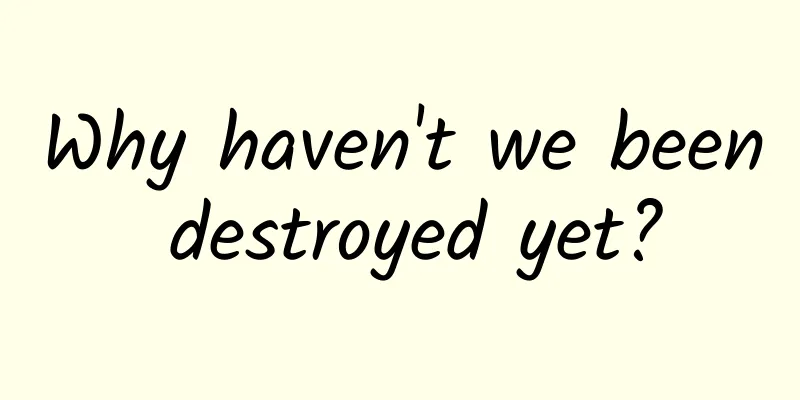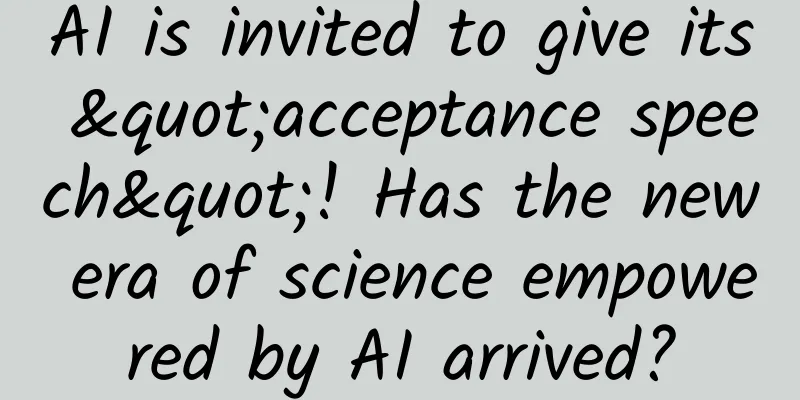Why haven't we been destroyed yet?

|
© Video Hive Leviathan Press: When we expand our vision to the scale of the survival of the world and even the universe, the observer effect seems to be amplified synchronously - in a sense, this view holds that our existence today is a coincidence (rather than a necessity based on some kind of dynamic balance of the cosmic environment, because the balance can easily be broken by accidental events), otherwise there would be no "us" to observe our own existence. But is the survival of an individual also based on the observer effect? Every day, more than 50,000 people die in various ways in this world, and this is just our observation as living individuals. For the deceased, his vision and the world disappear along with his life, and there is no room for any discussion. Humanists who adhere to scientific concepts would believe that it is the fear of such a future ending that gave rise to theories such as reincarnation. Therefore, the observer effect does not change with the change in the scale of the object of discussion. The reason why it is difficult to attract people's attention is only because we are still here. For bomber pilots flying over Europe, driving their planes is like an eagle catching chickens, and they can easily turn cities into dust, but this is not an easy job. Even if they turn the once bustling streets into a roaring sea of fire, death is still with them. In fact, whether they can fly a bomber alive and triumphantly has become a matter of fate. As bombers' ammunition dropped silently from their bomb bays, the rising shells from the smoldering ruins of the city and the charred farmland would bring the planes down like feathers. When the recruits saw the empty beds left by the dead pilots, their fighting spirit was completely worn out before they entered the cockpit. To reduce crash losses, Allied officials studied the shapes of bullet holes in aircraft, identified vulnerable areas, and reinforced them with armor. © Wikimedia Commons It’s natural to assume that the parts of a bomber that seem to take the most hit from bullets need more armor. But Hungarian-born mathematician Abraham Wald and his colleagues in Columbia University’s statistics research group have come up with a novel and perhaps counterintuitive idea: Instead of protecting the parts of a plane that take the most damage, give more defense to the parts of the plane that don’t get hit by bullets at all. “You need to put armor in places where it’s not being attacked, because if an aircraft is hit in those places, it can’t get back home. They’re dead,” said Anders Sandberg, a senior fellow at the Future of Humanity Institute at the University of Oxford. The bullet holes don’t objectively reflect where the returning plane might have been hit, but only what later observers might have seen. This is called the observer selection effect, and the same bias may apply not just to the punctured planes but to everything in the universe. If we look back at Earth's past, what do we see similar to this? After all, there are craters on our planet that are 100 miles (161 kilometers) in diameter, formed over the past billion years, but there are no craters that are 600 miles (966 kilometers) in diameter. Of course, craters that big can't exist. No human being could live on a planet with such a huge crater, let alone think about it. The irony is that truly huge craters do not appear on the surface of this planet, only because we who are looking for them exist on this land. Just as returning planes can only reflect the only survivors, so is the history of our planet. Our existence is proof that we are not threatened by these survival threats. Schematic distribution of locations where meteorites have struck Earth's continents. © www.lpi.usra.edu "The 'observer selection effect' is the idea that the data that an observer gets is in some sense dependent on his survival, or his existence as an observer," Sandberg said. "When we apply this effect to our own survival, it becomes both interesting and scary." It is a miracle that life on Earth has been able to evolve for billions of years without lethal disruption. While such a long, unbroken chain of survival may seem impossible, it is as necessary to our survival as water is to fish. Yet only recently have we begun to wonder how humans got to this point. Like a bullet-riddled airplane that makes it home safely, Earth has survived countless near-fatal blows. It has survived volcanic eruptions, supersonic space rock impacts the size of Mount Everest, and ice ages that left the equator nearly frozen. If those disasters had been more severe, we wouldn't be here. But because of this, no more serious disaster has ever occurred. As Sandberg and co-authors Nick Bostrom and Milan Ćirković write, “Risk assessments for catastrophes such as asteroid/comet impacts, supervolcano eruptions, and supernovae/gamma-ray bursts are based on their observed frequencies. Therefore, the frequency of damage or disasters on Earth is different from the observed frequency and is systematically underestimated.” © Getty Images That is, our predictions about the future can be clouded by our lucky past. Looking back at the history of the Earth, it is not only impossible to find a crater that truly destroyed the world - even stranger is that even though countless planets similar to our Earth in the vast universe are constantly experiencing such impacts, it is still impossible to find rock records of related impacts on Earth. Potential risks, even if they have a very high probability of existing and are hanging over our heads like the sword of Damocles, still disappear "without a trace" under the cover of the "human shadow". "If a nuclear war breaks out, you won't be living to think about that." “Maybe the universe is as hostile as the Dark Forest, and Earth-like planets are being destroyed at an extremely high rate,” Sandberg believes. “But if the universe is large enough and the observer is on a very, very rare planet, they will have records of meteor impacts and disasters that will make them think, ‘The universe looks pretty safe!’ But the problem is that the observer’s existence depends on them being very, very lucky. They are actually in a very unsafe universe, and they may get a ‘bad surprise’ next Tuesday.” If true, it would explain why our radio telescopes report only silence in our neighboring star systems. Perhaps we are the ultimate outlier, distinguished by a near-impossible history—a planet in a star system free of rampaging, chaotic lethal gas giants, but also one filled with unusually favorable surprises, such as a catastrophic collision early in Earth’s history that created a miraculous, massive moon that stabilized Earth’s planetary orbit and allowed complex life to flourish. As the solar system continued to oscillate, we had just enough water to lubricate the plate migrations and end the violent plate tectonics, which allowed Earth to have a habitable climate for hundreds of millions of years and saved it from the disasters that happened on Venus (700 million years ago, Venus had a similar climate to Earth, but due to the greenhouse effect caused by violent volcanic eruptions, all the water evaporated and lost the conditions for nurturing life, translator's note), but not too much water to turn Earth into a lifeless swamp. © NASA The history of the Earth tells us that seemingly harmless things, such as a short-lived supercontinent (a united continent formed several times on Earth in ancient times by the confluence of various continents, and violent plate movements occurred during the merger and separation of continents, translator's note), have nearly destroyed the world several times, showing that the entire complex life system is so fragile. Not only have we survived one stunning catastrophe after another, but in the process we have never in any way returned to square one in 4.5 billion years - despite the eerie close misses of potentially Earth-destroying comets like Hale-Bopp. Perhaps this is the luck required to produce observers like us - meaning that many other places beyond our reach are filled with cold, gaseous planets and lifeless solid planets. Comet Hale-Bopp passed close to Earth on March 27, 1997. © Cosmic Pursuits The same weird observer selection effect could explain not only our incredibly uneventful ancient history, but also our recent history. After all, just as we cannot find life similar to ours on a planet riddled with craters, we cannot exist on a planet destroyed by settlers themselves. ﹡﹡﹡ We live in a new world where nuclear weapons can end everything. For more than half a century, our world has faced the constant threat of all-out nuclear war. But for a variety of reasons, nuclear war has not happened. Otherwise, you wouldn't be reading this article. Perhaps you can infer the catastrophe of a full-scale nuclear war from the results of nuclear bomb tests in the past 70 years. Since we have not been exterminated on Earth by nuclear war for such a long time, it is reasonable to believe that the probability of a nuclear war breaking out at any point in the future is close to zero. “That sounds really good, except, of course, that you can only do this kind of calculation if there isn’t a nuclear war,” Sandberg said. © Gifer Either nuclear war is truly unlikely, or something stranger is at work. Given observer selection effects, the threat to our survival in the nuclear age so far may represent only unforeseen but imminent dangers. Perhaps this is true of most civilizations that develop the ability to self-destruct. The fact that a nuclear disaster has never occurred in our observed past tells us nothing about the likelihood of it happening in the future. "So you could imagine we're in a world where there's a 50 percent chance of nuclear war every year. So in year one, half the world gets hit by a nuclear attack. And then in year two, the other half of the world that survives gets hit. And so on and so forth. And then 70 years from now - if there's a large enough parallel universe out there - there's some surviving observer who says, 'Hey, we looked pretty safe,' which is a scary thing. And yet they're still going to be terrified when a nuclear bomb whizzes over their head again," Sandberg said. The modern world, like the larger universe, is potentially far more dangerous than what we have currently experienced—precisely because we exist. The fact that we have never observed nuclear disasters in the past tells us nothing about the likelihood of them happening in the future. Soviet officer Stanislav Petrov prevented a possible nuclear war. © Scott Peterson/Getty Images On September 26, 1983, a Soviet officer on duty named Stanislav Petrov suddenly felt his whole body go limp. He was operating the Soviet Union's early warning system for American nuclear missiles when his computer prompted that something unthinkable had happened: the highly reliable detection system had detected an incoming nuclear warhead. It was a nuclear strike that could end human civilization, or it could be a computer malfunction. “The sirens were wailing, but I only sat there for a few seconds, staring at the big red backlit screen with the word ‘launch’ written on it,” Petrov later told the BBC. “All I had to do was pick up the phone and contact our top commander – but I couldn’t move. I felt like I was sitting on a pot of hot oil… After 23 minutes, I realised nothing had happened. If it had been a real attack warning, I would have felt its force long ago. I breathed a sigh of relief… They were lucky because I was the one on duty that day.” On November 9, 1979, U.S. National Security Advisor Zbigniew Brzezinski woke up to a military aide solemnly informing him of another full-scale nuclear strike, this time from the Soviet Union. As he prepared to call the president to recommend a counterattack, Brzezinski decided not to wake his wife, but to let her die peacefully in her sleep like everyone else. After a moment, Brzezinski realized it was a false alarm. Just a few months later, a microchip worth just 46 cents caused three more false alarms in the U.S. early warning system. In November 1983, the U.S. and its allies conducted an extremely realistic military exercise called Able Archer 83, which almost prompted the Soviet Union to respond in self-defense. This was not widely known at the time. On January 17, 1966, a U.S. bomber carrying four hydrogen bombs crashed off the coast of Spain without causing any geopolitical repercussions. On October 27, 1962, the Soviet Union shot down a U.S. spy plane over Cuba, and President John F. Kennedy’s advisers urged him to retaliate. Kennedy did not. But as his brother later wrote of those harrowing moments: “There was a feeling that the noose was tightening around our necks, around the necks of Americans, around the necks of all mankind! And the bridge of escape was collapsing.” Two days ago, when the world was on edge and the military was at its highest level of readiness ever, a bear climbed the fence of an Air Force base in Duluth, Minnesota, triggering an alarm at nearby Volk Field Air National Guard Base, prompting pilots to board nuclear-armed fighter jets as fast as they could, only to be intercepted by trucks speeding down the road before they could take off. On January 17, 1966, a US B-52 strategic bomber carrying four B28 hydrogen bombs collided with a Boeing KC-135 aerial refueling aircraft in the air. Two of the four hydrogen bombs carried by the B-52 sank to the bottom of the sea, and two fell by parachute into the farmland of the village of Palomares, Spain. © Al Dia News “The deep reason why humans have survived so long may be simply because we’re still around.” Yet somehow these frantic attempts at the brink of doom have not spilled over into the real world. If any of these things were to come true, we would cease to exist. But what if nuclear war were truly a very real possibility? If so, a society like ours that has avoided doomsday would become a statistical outlier, and over time would require more and more miraculous, improbable events to keep it going. But in a large enough universe, this scenario is real. And they are the only ones who have studied the history of nuclear diplomacy. Maybe Earth is one of these increasingly rare and exotic planets that survived the first 72 years of human nuclear weapons and witnessed many unexplained miracles. When I first spoke to Sandberg three years ago, he thought it was possible that these close calls during the Cold War might have saved us from nuclear Armageddon. For every person who was puzzled that Stanislav Petrov didn't push the button, there were 99 others who did. But for those desolate, shattered planets suspended in space, there is no longer any life to blame. “We should probably see more miracles,” Sandberg told me during our first conversation. “Not just Petrov, but the malfunction of a phone or something else that saves us. We’ll see more and more of these kinds of miraculous things happen over time.” But he seems to have changed his mind since then. After factoring the “observer selection effect” into his calculations, Sandberg now thinks our past near-misses might actually give us peace of mind. If those nuclear brinkmanship policies deteriorate and eventually destroy humanity, then those who survive the nuclear age - like us - should actually experience fewer such accidental discharges in history. Instead, we should look back at history as a time of calm, without the Cuban Missile Crisis, because a world at total peace would lead to better outcomes (and more survivors) than one teetering on the brink of doom. In all fairness, who would you rather be: the person who survived 100 rounds of Russian roulette, or the person who has never picked up a gun? © Zoë van Dijk ﹡﹡﹡ But because we have lived through so many close calls in the past, maybe these things weren't so close to the bullseye of human extinction in the first place. And the bullet holes we thought of as near misses were just harmless hits on the fuselage. Maybe Petrov's existence means that nuclear brinkmanship, and even nuclear war, are not as dangerous as we think. Maybe nuclear war won't evaporate all humans from the earth, or maybe there is a situation where the first round of nuclear attacks doesn't inevitably lead to heavy punches on both sides. Otherwise, Petrov wouldn't have been so close to the red button in the first place. “My co-authors thought my conclusions were not cool enough,” Sandberg said. “The demands of our job here can be a little crazy.” If the observer selection effect can affect everything from prehistoric times to killer comets, or even our own human history, perhaps this bizarre deviation can be traced back to the beginning of the universe, the Big Bang. The fact that the universe is so old is the most extraordinary product of the “observer selection effect,” says Anthony Aguirre, a theoretical cosmologist at the University of California, Santa Cruz, and founder of the Future of Life Institute — an organization similar to Sandberg’s that seeks out existential threats to humanity in the near future and that counts Elon Musk and the late Stephen Hawking as senior advisors. “There’s a disaster that’s not often talked about… It’s called ‘vacuum decay,’ ” Aguirre said mysteriously in his office. As Aguirre explained, these two words represent the most dangerous and civilization-ending disaster imaginable. Although the end of the universe is generally believed to occur slowly in the distant future - a brief spring followed by a plunge into eternal darkness, bringing eternity and nothingness for eternity - Aguirre said the universe could also end with a bang at any moment. © BGU Physics Department “Because there are a lot of fields in the space of the universe,” he began, “the electromagnetic field is the most common one. The electron field, the proton field, the Higgs field—they are everywhere. When we talk about the vacuum, we are referring to these fields in their unexcited state.” So a single electron is an excited state of the electric field, and when we remove all the electrons, the field is still there. We call this the vacuum state. But the vacuum state is not necessarily completely stable, and you can get this state when you remove all the electrons, and it still has a certain amount of energy in it. And, in theory, this energy could change. In fact, there is no particularly good reason to believe that the vacuum state we are in is the lowest vacuum energy. In fact, there are many reasonable speculations that it is not. He began to laugh nervously. I had no idea why he was laughing like that, but then I realized that once the vacuum of space spontaneously dropped to a certain new energy value, the laws of physics would cease to apply, and the universe as we know it would end. "It starts out as a point event in the universe, and then expands at the speed of light, destroying everything on this planet," Aguirre said. "So once that state passes us, we're in a state with a different set of physical laws, one that we can't survive in." This sensational catastrophe is no mere academic fantasy, or the product of leisurely blackboard calculations over a cup of coffee. This psychedelic transformation likely occurred in the infancy of the universe, as the laws of physics were condensed from the primordial fire of the Big Bang and the fundamental forces we now know crystallized from more exotic forms. In fact, in 2012, as the world celebrated the discovery of the Higgs field (via the Higgs boson)—a thrilling confirmation of a half-century-old theory—some physicists quietly decided that the Higgs boson looked unstable and might one day destroy the universe. "So it could be the Higgs field, but it could also be any combination of other fields in physics that could, in theory, transition to some other vacuum state." If this were to happen, it would be the end of everything, and there would almost certainly be no more observers in the future. © BBC “But since we’re still here, it’s reasonable to assume that the timescale is at least billions of years. But there’s no very good reason to—well,” he dropped the subject. "So you can make different arguments," he said. "You can argue that if it's been around for billions of years, then it can easily be around for another trillion years, or a billion years, or a half billion years, so we don't have to worry too much, or ..." **Or it could be like the asteroids that passed by Earth before humans existed, but never struck it, ensuring our presence on this planet but blinding us to such potential dangers in the future. Just as observers cannot exist in a rapidly destroying world, they cannot exist in a rapidly disintegrating universe, ** no matter how common the destruction of worlds or the disintegration of universes may be. “The fundamental reason we’ve been around so long is that we’re still alive,” Aguirre said. Countless cosmic ghosts of unforeseen disasters hover above us as we speak, like skeletons at a feast—or like airplanes sunk to the bottom of the English Channel. “So,” I began, “there are billions of universes that are suitable for life, but they’re just…” "Indeed, they just didn't last long enough. And we're in one of those universes that lasted long enough... Maybe we're living on the brink of destruction. Like we could be in a universe that gave rise to life and allowed them to think about the length of time the universe has existed, but we're the shortest-lived one. And that wouldn't be a good situation." Aguirre began to laugh again. Like the continent-spanning craters Sandberg had mentioned that mysteriously disappeared, the end of the universe itself might be looming in the shadow of humanity, controlled until now by our existence. Perhaps it is only possible to wake up in an almost impossible universe that has persisted for billions of years. In the early days of the Large Hadron Collider's operation, this behemoth encountered endless technical difficulties and financial crises. Some researchers called these unexpected disasters "anti-miracles" and even half-jokingly and half-seriously suggested that this was a warning from the universe to avoid the destruction of the world due to the successful operation of the accelerator. © Firstpost "We cannot rule out the possibility that we in the parallel world may have died five minutes ago." The existence of the universe allows people to have some very strange ideas, and that's an exciting thing. "Do you want to go through the mirror and experience a whole new world?" Aguirre asked me. [In Lewis Carroll's "Through the Looking Glass" (a sister work of the famous "Alice in Wonderland"), Alice dreams of passing through a mirror and starting an adventure in a new world, translator's note] “With pleasure,” I responded, surprised that we hadn’t already done so. Quantum mechanics is a very successful and wonderful form of microscopic physics that can predict the real world to almost any decimal place. In other words, it is the best description of how the world works at a fundamental level. **In quantum mechanics experiments, one of the most puzzling results of the 20th century showed that particles seemed to exist in a kind of "probability purgatory," where they could be everywhere at once, but nowhere in particular, and spin in both clockwise and counterclockwise directions at the same time—until they were observed. ** Once these particles are detected, these possibilities collapse into a logical outcome, and the observer will observe a specific value. One explanation for this quantum anomaly is that particles that are excluded in a certain observation may actually be in another branch of a parallel universe - a place similar to the one we live in. Not only is the universe infinite in distance, it may also have infinite branches in ontology. This is called the "many worlds interpretation" of quantum mechanics. Again, this isn't a widely known or esoteric theory. It's one of physicists' most widely accepted explanations for the strange world of quantum mechanics. If a vacuum decay catastrophe were to happen that would destroy the universe, it would happen in this strange, real world. "What's interesting is that the beginning of the formation of these vacuum decay bubbles is a quantum event," Aguirre said of the ultimate catastrophe. That is, it’s possible that the end of the universe could spontaneously kick in—like the hapless cat in Schrödinger’s box—and reality could split into two versions, with everything either gone or fine. Given that we’re likely just one of countless worlds in a multiverse that’s constantly splitting into different states, Aguirre wonders if we’ll feel the void being swept away when quantum Armageddon arrives. "So, what did we notice? That's a problem." If observer selection bias applies to our own lives, perhaps we will continue to be scrutinized until the end of the universe. “Assuming the multiverse interpretation of quantum mechanics is correct,” Aguirre said, “then one of our two states of existence is no longer in existence, but are we aware of it? The other state of existence continues to exist as if nothing has happened. In other words, at every moment we cannot rule out the possibility that the other parallel version of ourselves died five minutes ago. I cannot rule it out. This raises the interesting and difficult question of whether this has always been happening and we just never noticed it before.” © Imgur If it is true as Epicurus said, death will not come while we exist; and when death comes, we ourselves will no longer exist and will not have any feelings (Epicurus was a famous philosopher in ancient Greece. He advocated the hedonistic view that death is not worth worrying about and happiness is easy to find, translator's note). Perhaps we can only subjectively experience those branches of parallel universes that have been filtered out by reality, those branches that have not been constantly wiped out by the foam of vacuum decay. In other words, the universe is destroyed every moment, and we are just lucky enough not to notice it. But if observer selection bias applies to bizarre catastrophes like vacuum decay, then it seems subjectively capable of severing branches of parallel universes that end in death. I began to recall moments of my own life and death, such as a childhood car accident in which a drunk driver's truck collided with my mother's station wagon, and the truck's bumper smashed through the station wagon's rear window, missing my head by a few millimeters. Did I have observer bias about that car accident? After all, I am not the person in the parallel universe who died in the many childhood car accidents. I asked, "Doesn't that mean that, in a sufficiently absurd world, you can never die?" “So there’s nothing that slows down your slow aging,” he says, “but it’s a defense against a sudden death, which you find yourself lucky enough to have escaped (there’s always an alternate version of you that died a violent death, and there’s always an alternate version of you that didn’t). But anything that could disable or injure you is still there to make sure it’s fair game.” **This is an eternal torture. A person relies on his subjective consciousness to move forward in the ever-narrowing timeline branches, survives in a world with increasingly low probabilities until it is infinitely low, and finally achieves eternal life. ** This situation is called quantum immortality, also known as quantum hell. “Quantum immortality is one of the scariest ideas a human being could have,” said Sandberg of the University of Oxford. The topic has even become taboo among physicists, who believe that widespread publicity might encourage amateur physicists to bravely try Russian roulette. "From the perspective of most observers, someone who tries Russian roulette will die," Sandberg said. "But there will be a very small number of observers who think they are extremely lucky. But as they continue to gamble, the set of survivors will become smaller and smaller. But it will always include a parallel self." In talking to Aguirre, I mentioned a recent comment by his colleague, MIT physicist Max Tegmark, that if this kind of subjective immortality is supported by the many-worlds principle of quantum mechanics, then I would be much older than I am now. “So if we really are counting on quantum hell to achieve immortality, could you say, ‘Is there a small chance that I just happened to find myself in the first 41.5 years of my life,’ or something like that? I think it depends on how you measure it, because — and this is getting crazy — in a fantasy scenario like this, you could have lots and lots of young versions of yourself that are steadily being eliminated, so depending on how you calculate it, you might actually be young in that scenario.” "If we humans choose to destroy ourselves, there will still be a lot of life somewhere in the universe, and a lot of humans." Aguirre noticed my restlessness and tried to put an end to these strange topics and bring the conversation back to the area we were familiar with. “So I think this is all fundamentally wrong,” he said. “I see it as a reductio ad absurdum, but it’s not clear what the problem is.” **In fact,** if we cannot be granted eternal life by parallel worlds and observer selection effects, even if my world ends with a bang, everything is not completely gone - at least for the observer who still has consciousness. "The universe is really big, and I would venture to say it's infinite," he said, "because it seems to me that if expansion is already happening, then it will probably keep expanding—perhaps forever." He said he was referring to the theory that our universe is just one of countless universes, plucked out of an endless process of creation. Eternal expansion means an infinite universe. If the universe is infinite, then even if we disappear from this planet, there will still be a lot of life out there somewhere. There will still be a lot of humans... a lot of John Smiths and John Smiths sitting in offices. Aguirre speaks with a mixture of levity and seriousness. His colleague Max Tegmark estimates that in an infinite universe, there is another identical me 10^(10^29) meters away from me. “There will be many selves.” © Science News for Students Aguirre told me he had just finished reading Unbroken, the story of Louis Zamperini, a World War II Air Force lieutenant who miraculously survived a bomb-riddled battle in which eight of the ten pilots who took part were killed. Zamperini drifted in the waterless Pacific for a month and a half, during which time another pilot died, and survived two years of torture at the hands of the Japanese. But miracles of survival like Zamplin's tell us less about the triumph of the human spirit and perseverance—though it certainly represents much of that—than about the sacrifices of countless American soldiers in similar circumstances to make this statistically unlikely biography possible. “Obviously most people would have died in this situation,” Aguirre said of Zamplin, “but all you read about afterward are the stories of the survivors, so it seems like a miraculous series of events.” Perhaps we live in a similar Zamplin universe, with the shadow of an unseen, shattered world behind us. If we can only wake up in rare, seemingly miraculous worlds—and it’s a big enough universe—we shouldn’t be surprised by all the miracles that have happened in the past. By Peter Brannen Translated by Pharmacist Proofreading/Sesame seeds, grapes Original article/www.theatlantic.com/science/archive/2018/03/human-existence-will-look-more-miraculous-the-longer-we-survive/554513/ This article is based on the Creative Commons License (BY-NC) and is published by Pharmacist on Leviathan The article only reflects the author's views and does not necessarily represent the position of Leviathan |
<<: Popular Science | Pineapples are not only edible, but can also be a luxury item?
>>: Do you know how this rare variety of peony was cultivated?
Recommend
Latest research: Can you prevent dementia by eating? This healthy diet should be saved for your family
A recent study published by researchers from Newc...
These three stone carvings were discovered, which are very rare →
Survey of Tibetan cave temples reveals rare cliff...
Analysis of competing live streaming apps: In the battle for national time, how can live streaming apps gain users’ usage time?
Live streaming is a form of Internet content diss...
"Sleep for 12 hours after drinking it." This bottle of drink is regarded as a "sleeping magic tool" by netizens. Is it really effective?
"Anyone who has trouble sleeping should drin...
Haima Automobile sells its houses to save itself, FAW completely withdraws, and its equity is transferred to Hainan Holdings
Haima Automobile, which has attracted attention d...
April Fools' Day marketing minefield, it will explode on the spot if you are not careful!
April Fool’s Day is coming soon. In this article,...
How much does it cost to create a stadium booking mini program and a sports venue reservation mini program?
Nowadays, every city has gymnasiums of all sizes. ...
China Mobile APP Advertising Fraud Analysis Report
PC is disappearing from our daily life scenes at ...
Event operation and promotion data analysis formula!
This article will focus on operational activities...
It disappeared for 40 years and was named "extinct", but it recently reappeared!
In the past two weeks, we have collected these fr...
An 81-year-old man from Guangdong was forced to have his finger amputated after getting infected after pricking it while washing shrimp
recent, Mr. Mo, 81 years old, from Dongguan, Guan...
What is keyword promotion? Share 4 promotion tips!
Keyword promotion means that when users search us...
How to operate a company’s Douyin account? How to operate Douyin Blue V?
Tik Tok is a decentralized content distribution p...
If the whole of China was a class - in Gansu, all the classmates would be wearing the same clothes!
Students who have been to Gansu, can you guess wh...
Is the effect of bidding promotion declining? You must analyze these 8 factors
Nowadays, most of our SEM promotions revolve arou...









